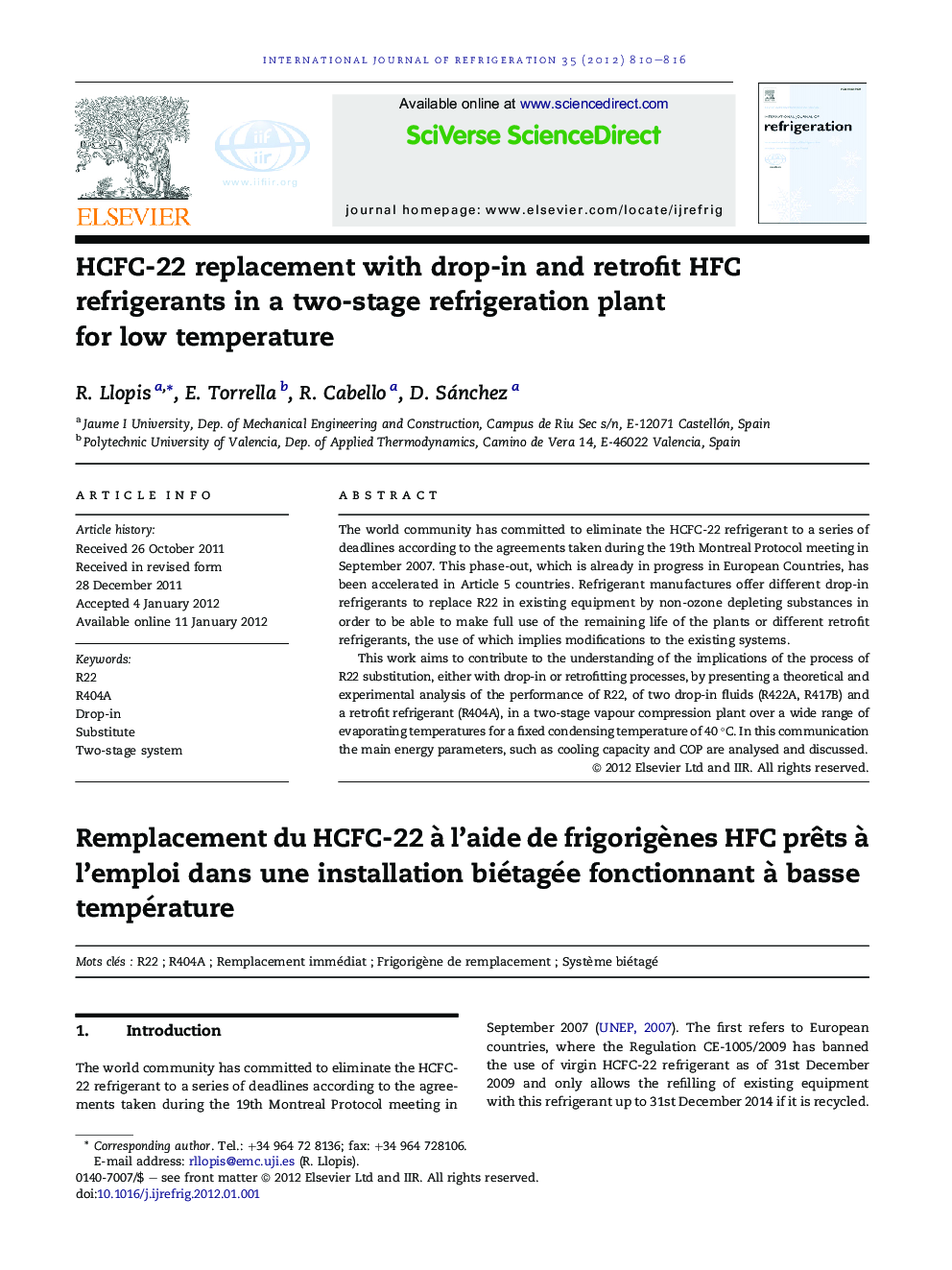| Article ID | Journal | Published Year | Pages | File Type |
|---|---|---|---|---|
| 790342 | International Journal of Refrigeration | 2012 | 7 Pages |
The world community has committed to eliminate the HCFC-22 refrigerant to a series of deadlines according to the agreements taken during the 19th Montreal Protocol meeting in September 2007. This phase-out, which is already in progress in European Countries, has been accelerated in Article 5 countries. Refrigerant manufactures offer different drop-in refrigerants to replace R22 in existing equipment by non-ozone depleting substances in order to be able to make full use of the remaining life of the plants or different retrofit refrigerants, the use of which implies modifications to the existing systems.This work aims to contribute to the understanding of the implications of the process of R22 substitution, either with drop-in or retrofitting processes, by presenting a theoretical and experimental analysis of the performance of R22, of two drop-in fluids (R422A, R417B) and a retrofit refrigerant (R404A), in a two-stage vapour compression plant over a wide range of evaporating temperatures for a fixed condensing temperature of 40 °C. In this communication the main energy parameters, such as cooling capacity and COP are analysed and discussed.
► Three substitutes of the HCFC-22 for low temperature applications have been tested. ► It has been measured a high increase of the refrigerant mass flow rate through the plant. ► The substitution of the R22 by these fluids results in a drop of capacity and reduction of COP. ► The reduction in capacity and COP when replacing the R22 must be seriously taken into account.
